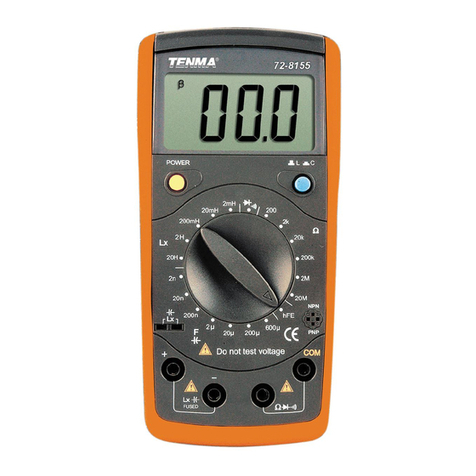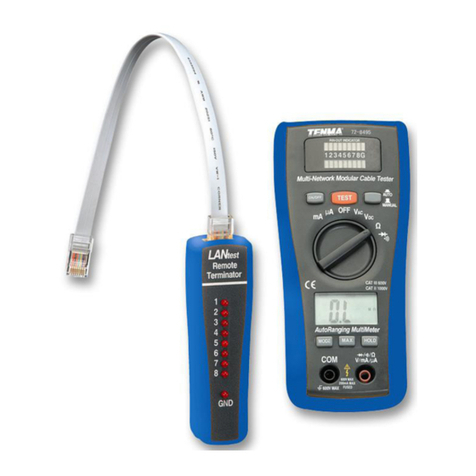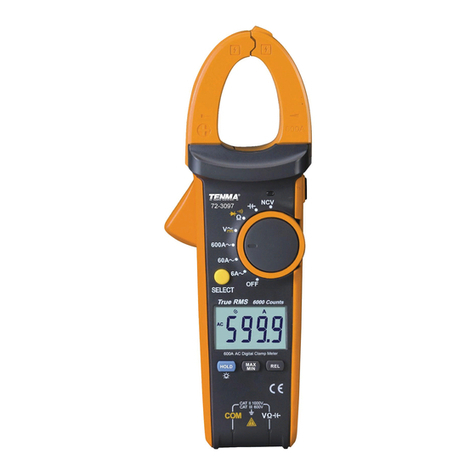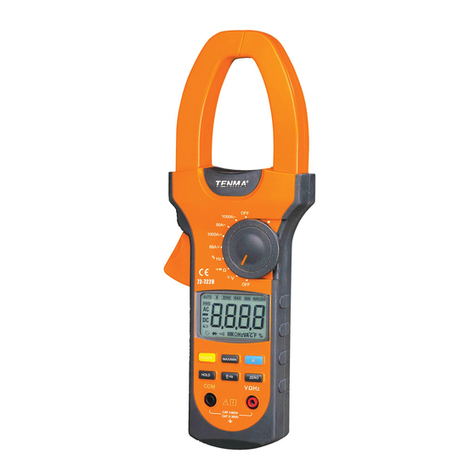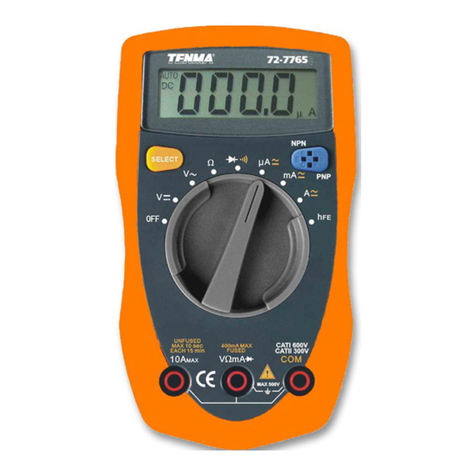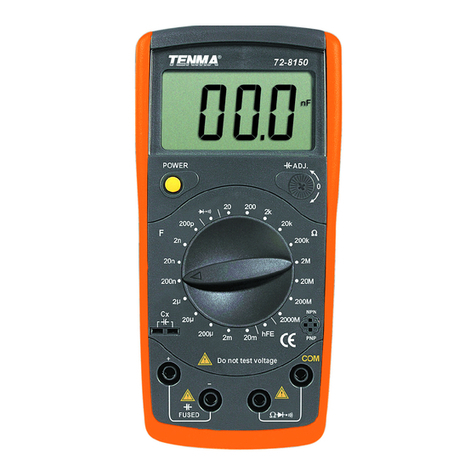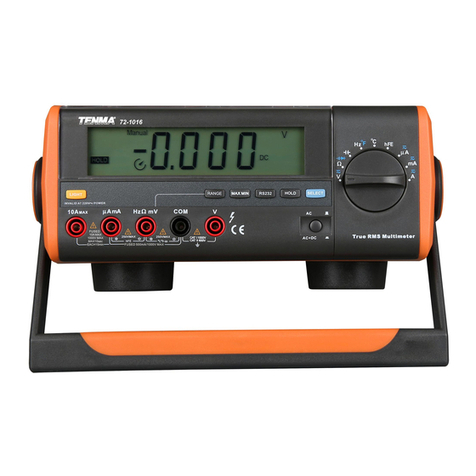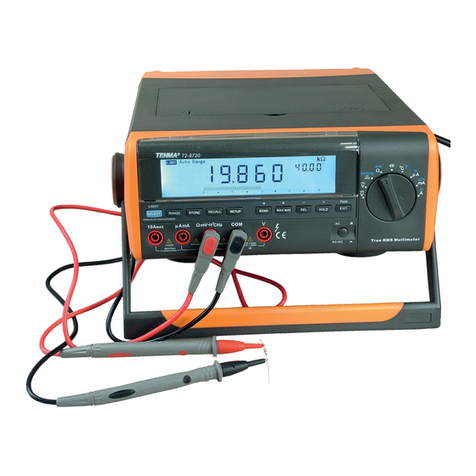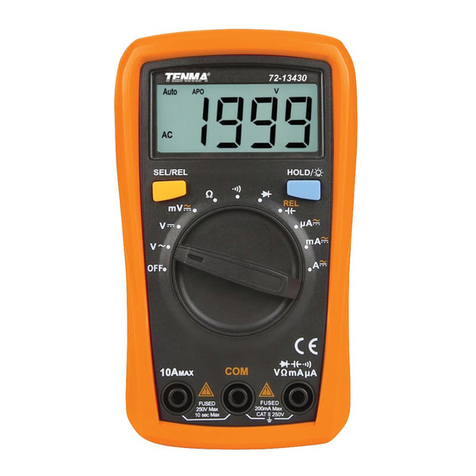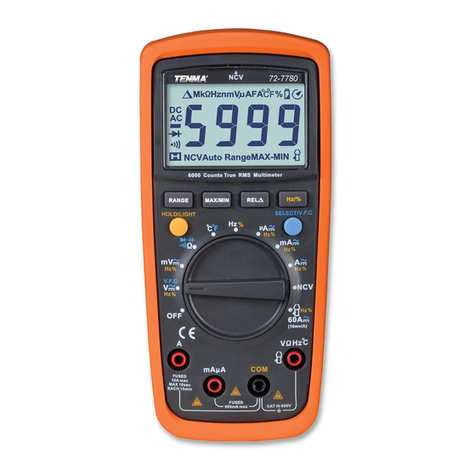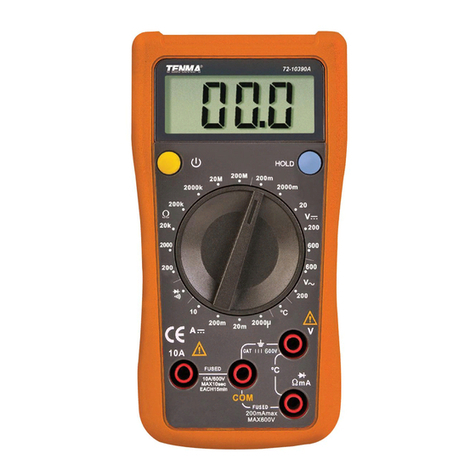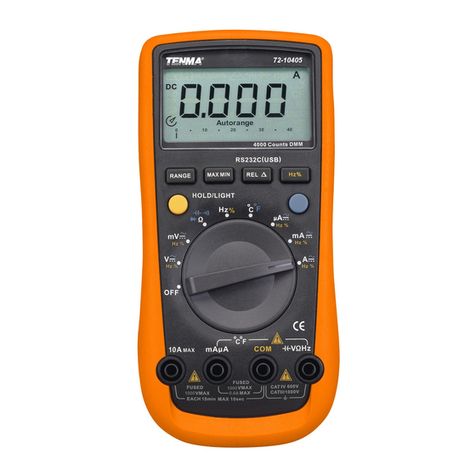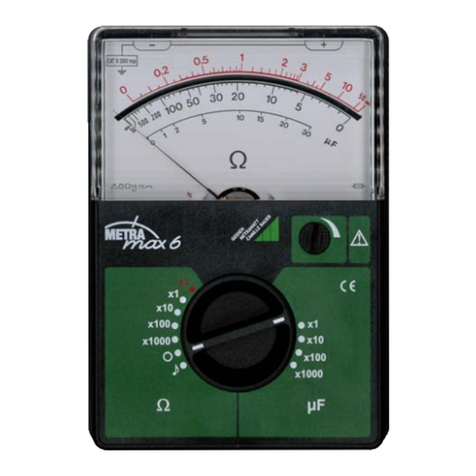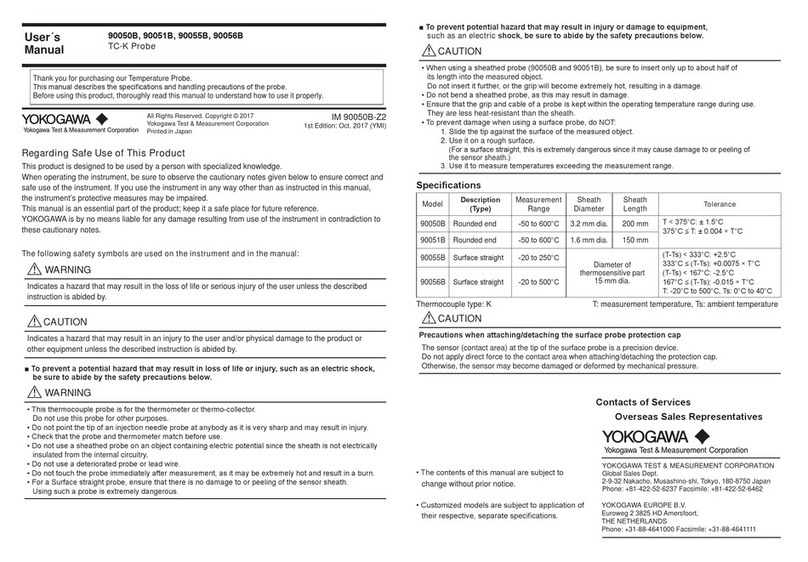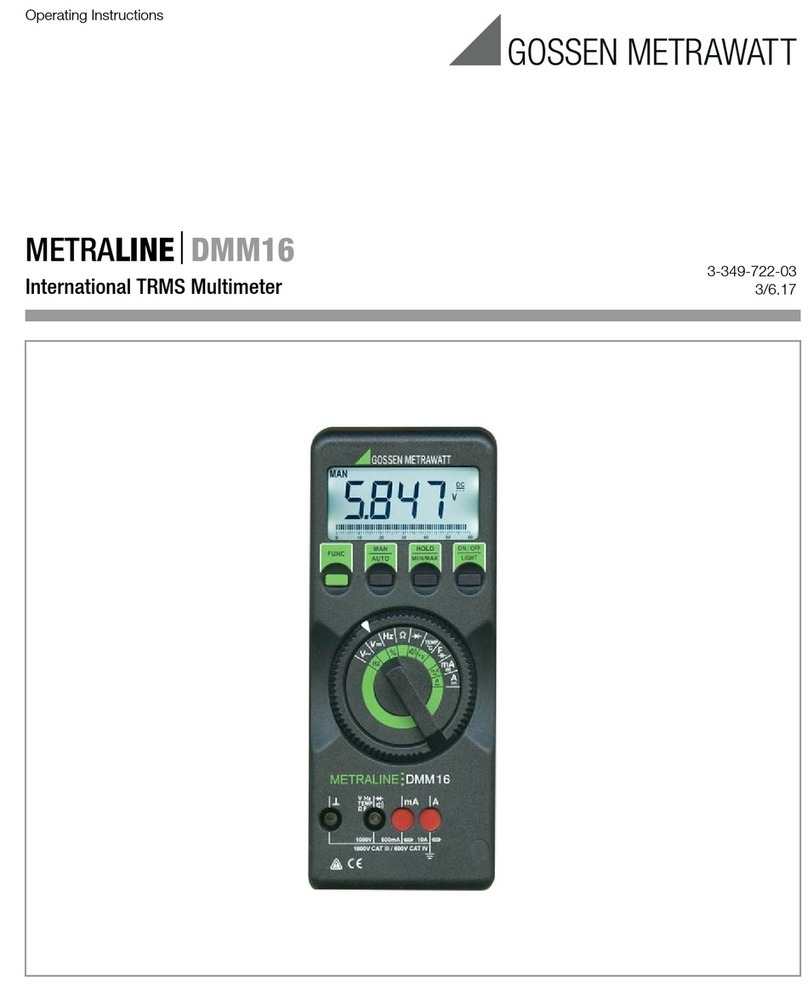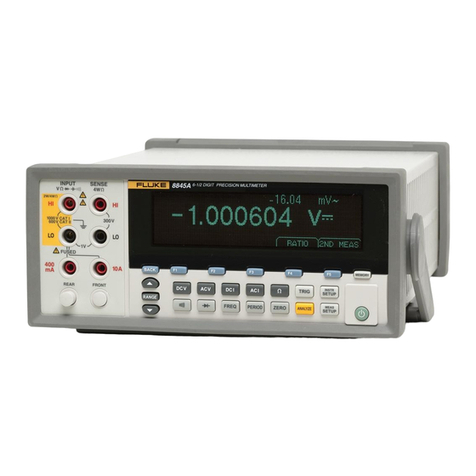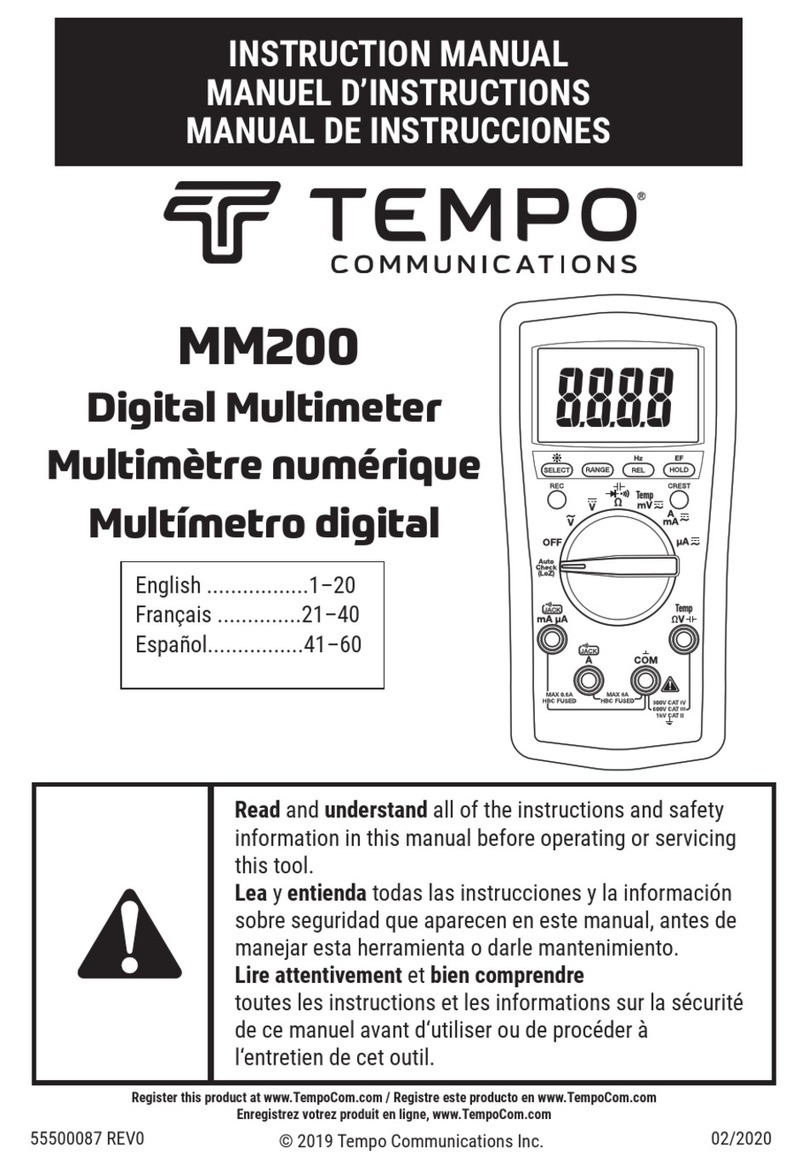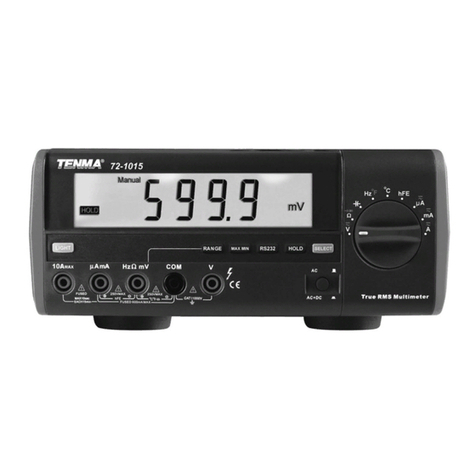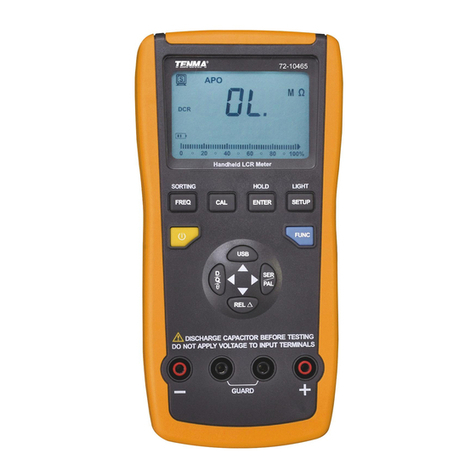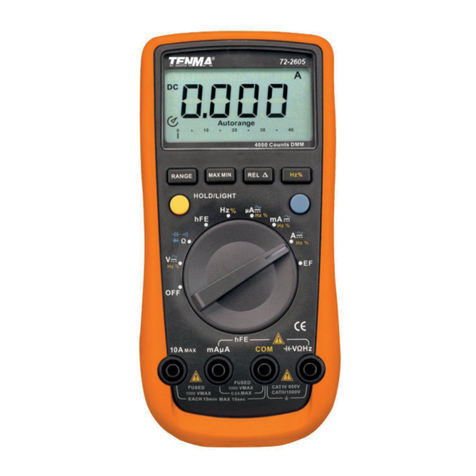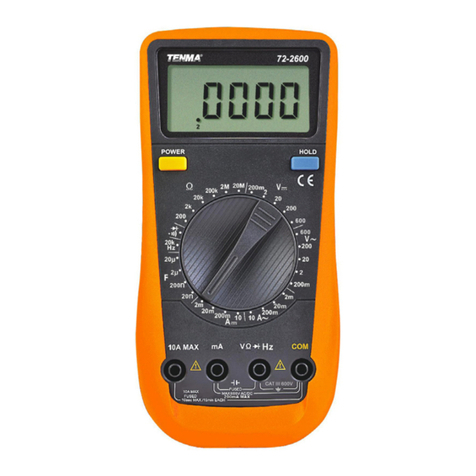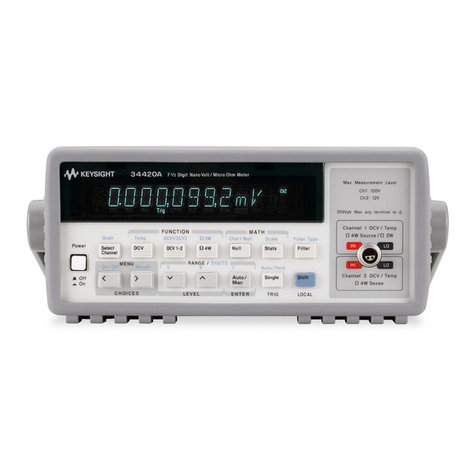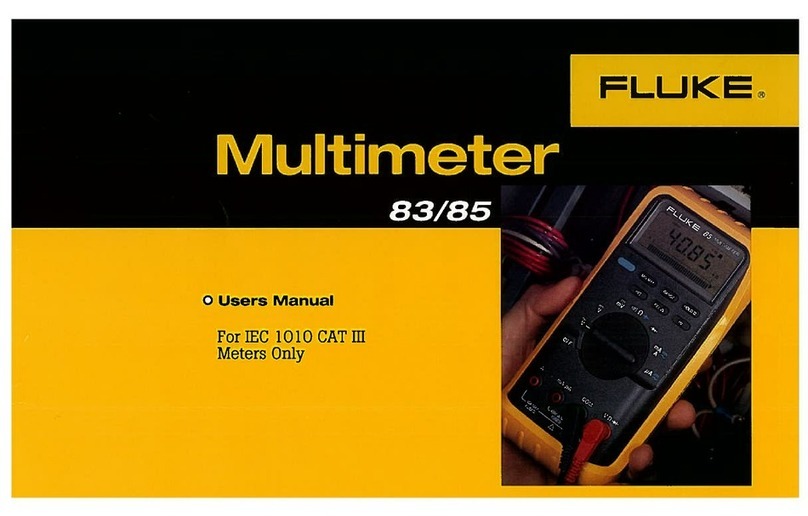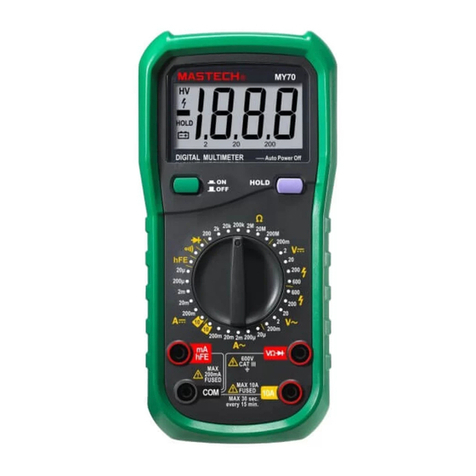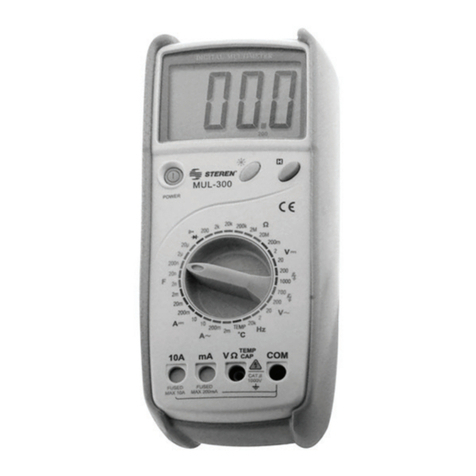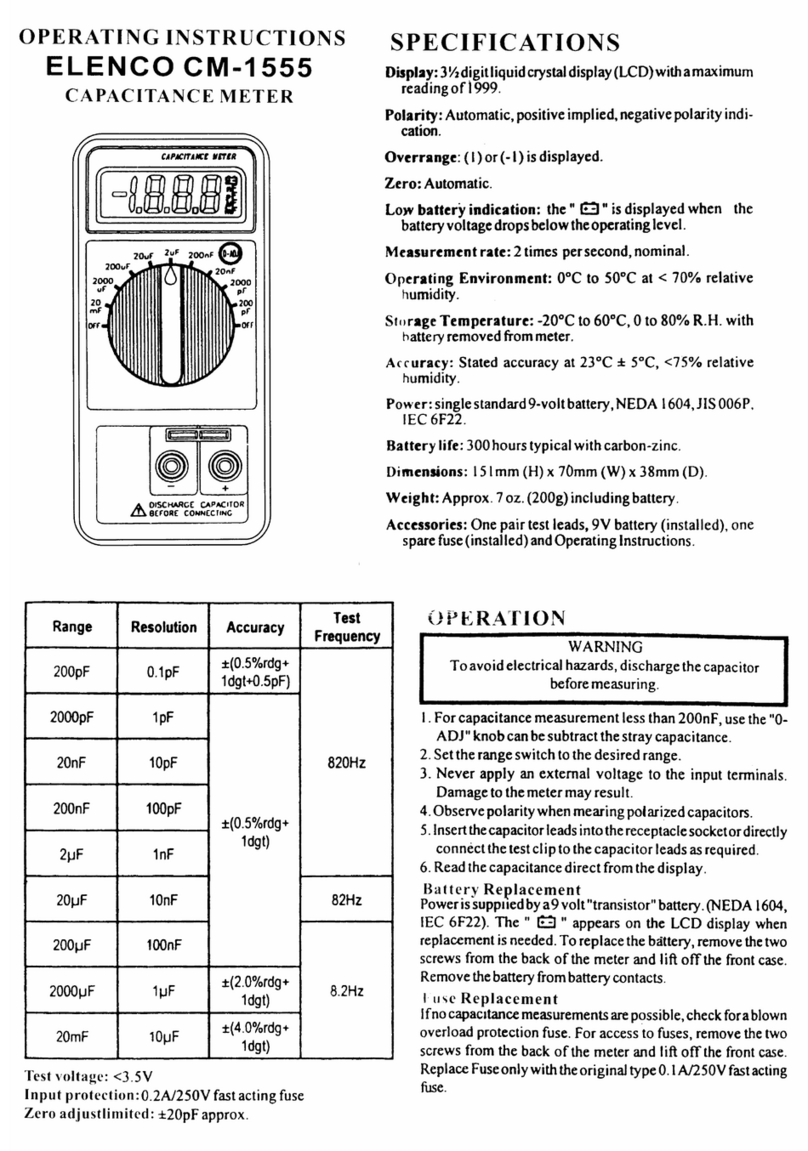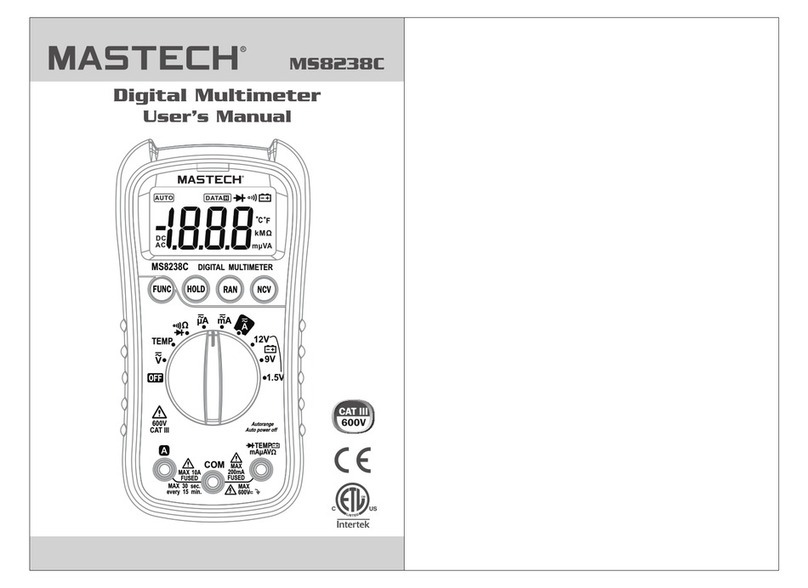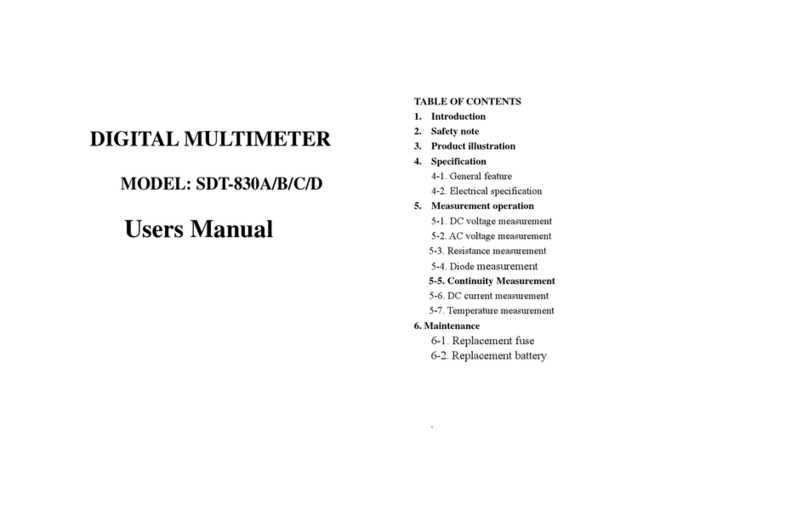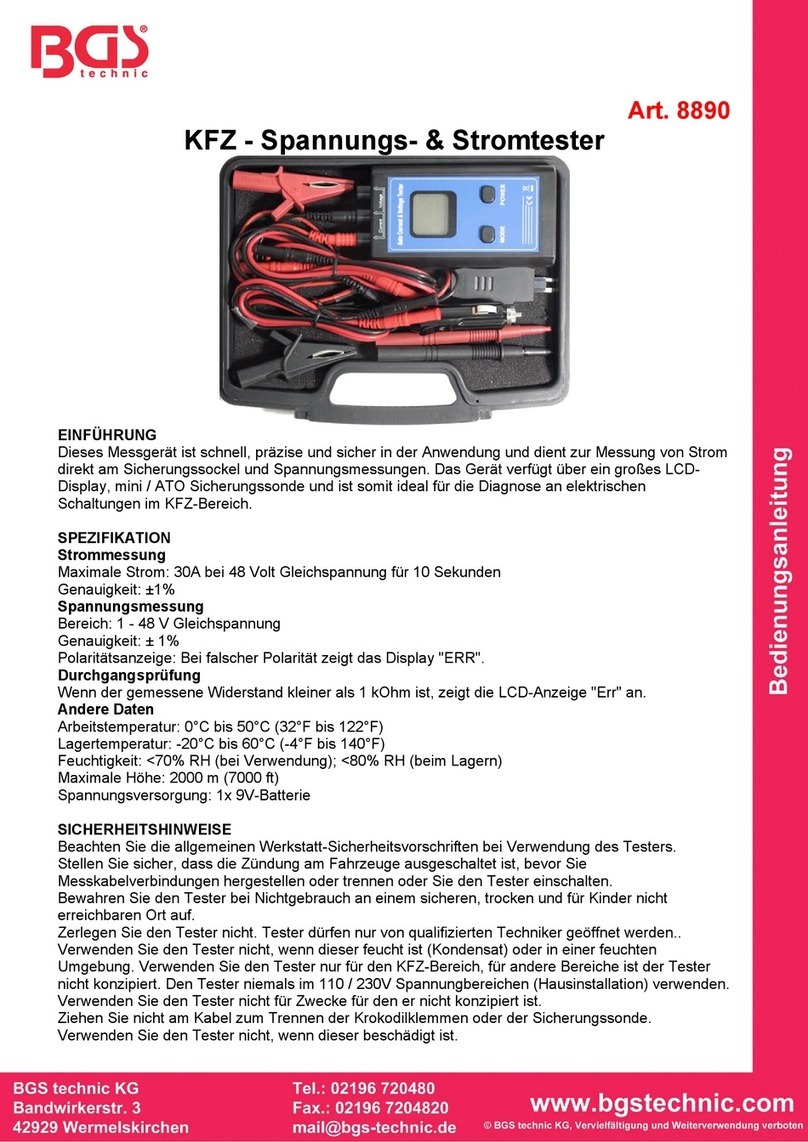Clamp Meter
With TTemperature
Page <1> 20/09/10 V1.1
http://www.farnell.com
http://www.newark.com
http://www.cpc.co.uk
Table of Contents
Title Page
Overview ------------------------------------------------------------------------------------------------------------------------------- 2
Unpacking Inspection --------------------------------------------------------------------------------------------------------------- 2
Safety Information ------------------------------------------------------------------------------------------------------------------- 2
Rules for Safe Operation ----------------------------------------------------------------------------------------------------------- 3
International Electrical Symbols -------------------------------------------------------------------------------------------------- 4
The Meter Structure ----------------------------------------------------------------------------------------------------------------- 4
Rotary Switch ------------------------------------------------------------------------------------------------------------------------- 5
Functional Buttons ------------------------------------------------------------------------------------------------------------------- 5
The Effectiveness of Functional Buttons ---------------------------------------------------------------------------------------5
Display Symbols ---------------------------------------------------------------------------------------------------------------------- 6
Measurement Operation ------------------------------------------------------------------------------------------------------------7
A. DC Voltage Measurement ---------------------------------------------------------------------------------------------------- 7
B. AC Voltage Measurement ---------------------------------------------------------------------------------------------------- 8
C. Measuring Resistance -------------------------------------------------------------------------------------------------------- 9
D. Testing Diodes ------------------------------------------------------------------------------------------------------------------ 10
E. Testing for Continuity ---------------------------------------------------------------------------------------------------------- 11
F. Temperature Measurement -------------------------------------------------------------------------------------------------- 12
G. AC Current Measurement ---------------------------------------------------------------------------------------------------- 13
Sleep Mode --------------------------------------------------------------------------------------------------------------------------- 14
Specifications ------------------------------------------------------------------------------------------------------------------------- 14
A. General Specifications -------------------------------------------------------------------------------------------------------- 14
B. Environmental Restriction ---------------------------------------------------------------------------------------------------- 15
Accuracy Specifications ----------------------------------------------------------------------------------------------------------- 15
A. AC Voltage ----------------------------------------------------------------------------------------------------------------------- 15
B. DC Voltage ----------------------------------------------------------------------------------------------------------------------- 16
C. Resistance ------------------------------------------------------------------------------------------------------------------------ 16
D. Continuity Test ------------------------------------------------------------------------------------------------------------------- 17
E. Diode Test ------------------------------------------------------------------------------------------------------------------------ 17
F. Temperature ---------------------------------------------------------------------------------------------------------------------- 17
G. AC Current ------------------------------------------------------------------------------------------------------------------------ 18
Maintenance --------------------------------------------------------------------------------------------------------------------------- 18
A. General Service ----------------------------------------------------------------------------------------------------------------- 18
B. Replacing the Battery ---------------------------------------------------------------------------------------------------------- 19

